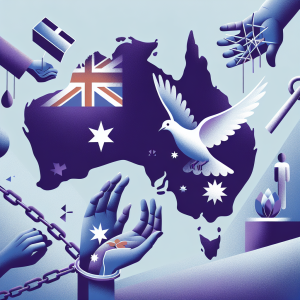Title: From Home to Horror: Startling Domestic Violence Statistics Unveiled
Introduction:
Domestic violence is a pervasive and alarming issue that affects people of all ages, genders, and backgrounds. In recent years, studies have unveiled shocking statistics showcasing the extent of this silent epidemic. As the COVID-19 pandemic forced millions of people around the world to stay at home, cases of domestic violence have surged, exposing the vulnerability of countless individuals locked inside their own homes. This article aims to shed light on the startling statistics surrounding domestic violence, highlighting the need for urgent action to address this horrifying problem.
The Rise of Domestic Violence during the COVID-19 Pandemic:
1. The global lockdowns have severely impacted victims of domestic violence, trapping them in close quarters with their abusers and cutting off their access to support networks.
2. In the United States, reports indicate that domestic violence hotline calls increased by approximately 9% during the pandemic. This figure is particularly concerning, considering that many victims hesitate to reach out for help due to fear, shame, or lack of access to resources.
3. According to the United Nations, for every three months of lockdown, an additional 15 million cases of gender-based violence are expected globally. The pandemic has bred the perfect storm for abusive behavior and exacerbated power dynamics within households.
The Alarming Statistics:
1. The World Health Organization estimates that approximately 1 in 3 women worldwide have experienced physical and/or sexual violence by an intimate partner in their lifetime.
2. In the United States, around 20 people per minute are physically abused by an intimate partner. On a typical day, domestic violence hotlines receive more than 20,000 calls.
3. Shockingly, domestic violence affects men as well. Globally, an estimated 1 in 7 men has experienced severe physical violence by an intimate partner.
4. Moreover, witnessing domestic violence during childhood significantly increases the likelihood of perpetrating or experiencing violence later in life. This frightening cycle perpetuates violence across generations.
FAQs (Frequently Asked Questions):
Q1. What qualifies as domestic violence?
A1. Domestic violence encompasses a range of abusive behaviors such as physical violence, emotional abuse, sexual assault, economic control, and intimidation. It can occur within heterosexual or same-sex relationships and affects individuals regardless of age, race, or socio-economic background.
Q2. What are the long-term consequences of domestic violence?
A2. Domestic violence can have severe and long-lasting effects on victims’ physical and mental health. It often leads to various health issues, including chronic pain, cardiovascular problems, depression, anxiety disorders, and substance abuse. Additionally, it can impact children who witness violence, leading to behavioral problems, emotional trauma, and a higher risk of engaging in violence themselves.
Q3. What can be done to address domestic violence?
A3. Addressing domestic violence requires a multifaceted approach involving individuals, communities, governments, and organizations. Some key strategies include:
– Raising awareness and educating the public about domestic violence.
– Strengthening laws and policies to protect victims and hold perpetrators accountable.
– Providing accessible support services for survivors, including helplines, shelters, counseling, and legal aid.
– Equipping healthcare professionals, police officers, and other frontline workers with training on recognizing and responding to domestic violence cases.
– Promoting healthy relationship models and fostering gender equality.
Conclusion:
The unsettling domestic violence statistics unveiled in this article highlight the urgent need to address this critical issue. Domestic violence is not confined to any particular region or demographic; it permeates all societies, causing immeasurable pain and suffering. The COVID-19 pandemic has further exacerbated this crisis, making it crucial to implement comprehensive measures to protect vulnerable individuals and support survivors. Only by acknowledging the severity of the problem and addressing it head-on can we hope for a future free from the horror of domestic violence.





















